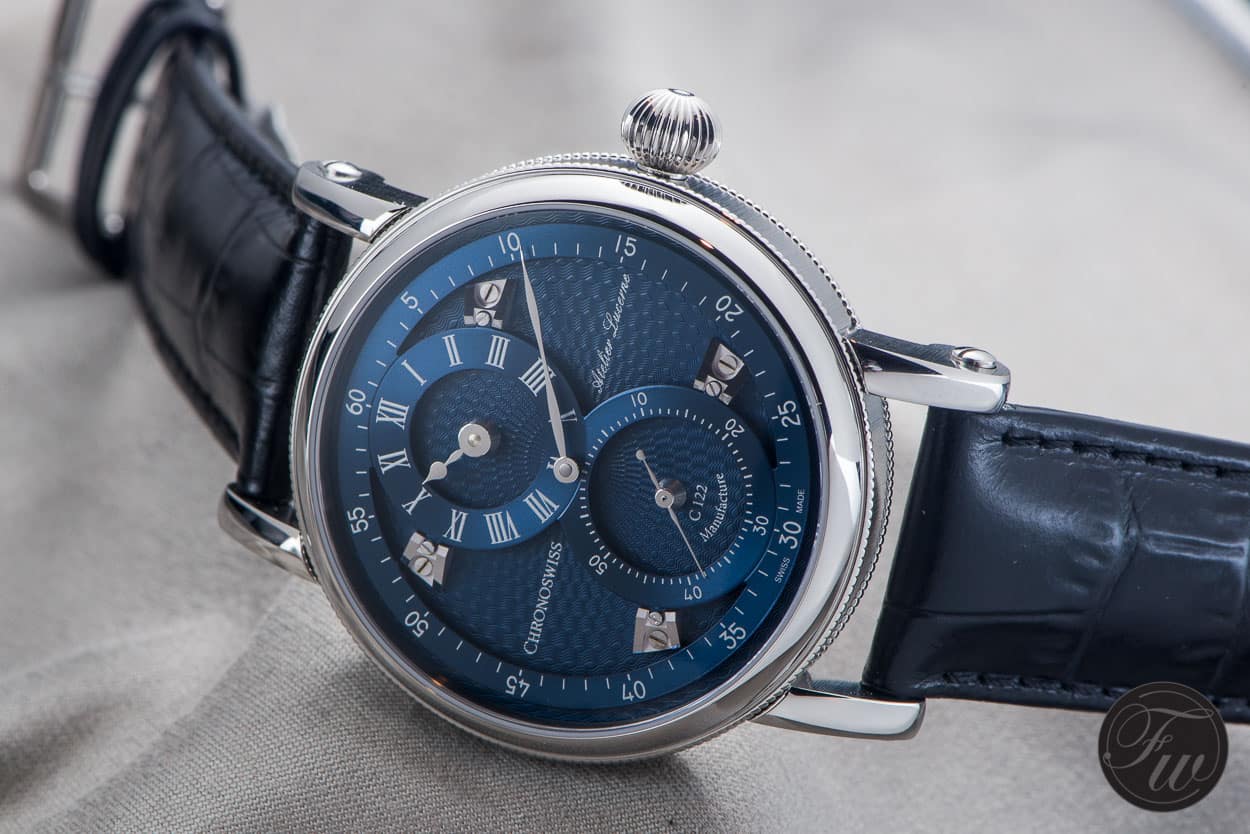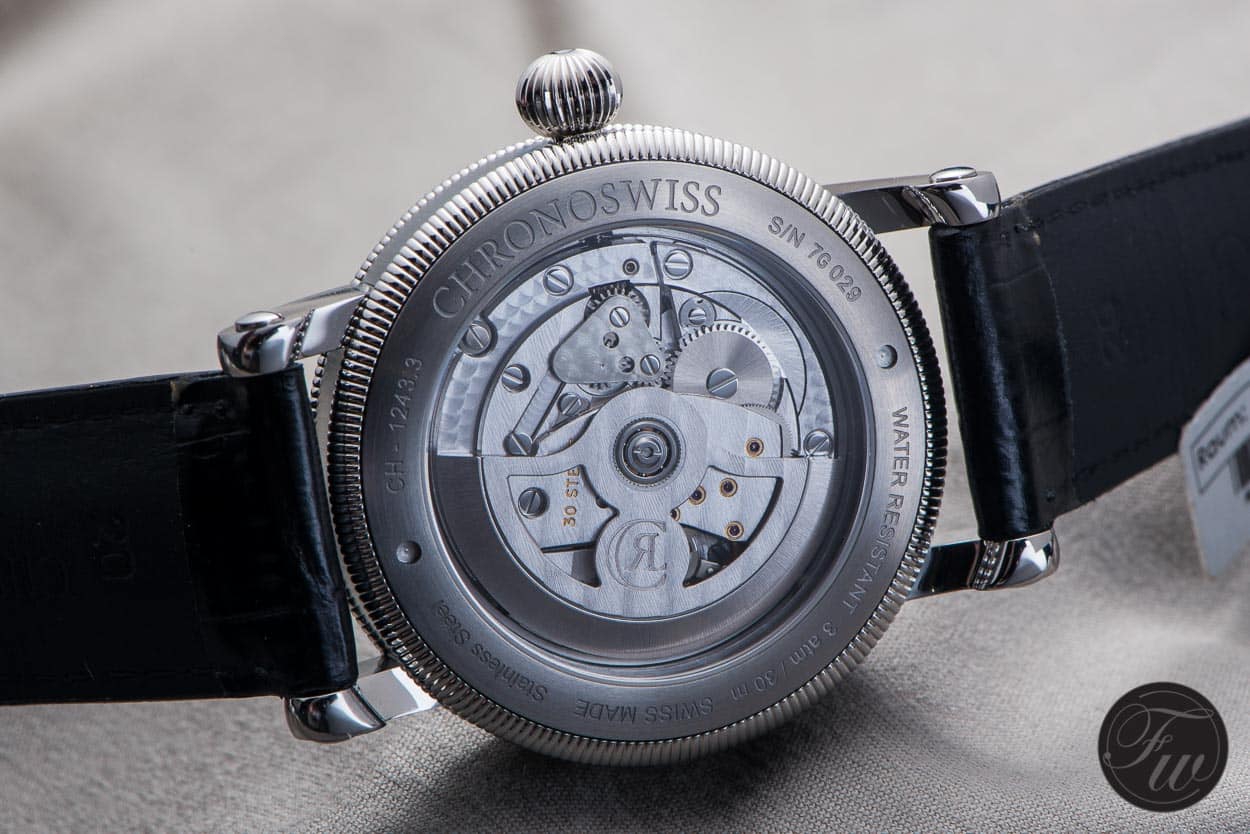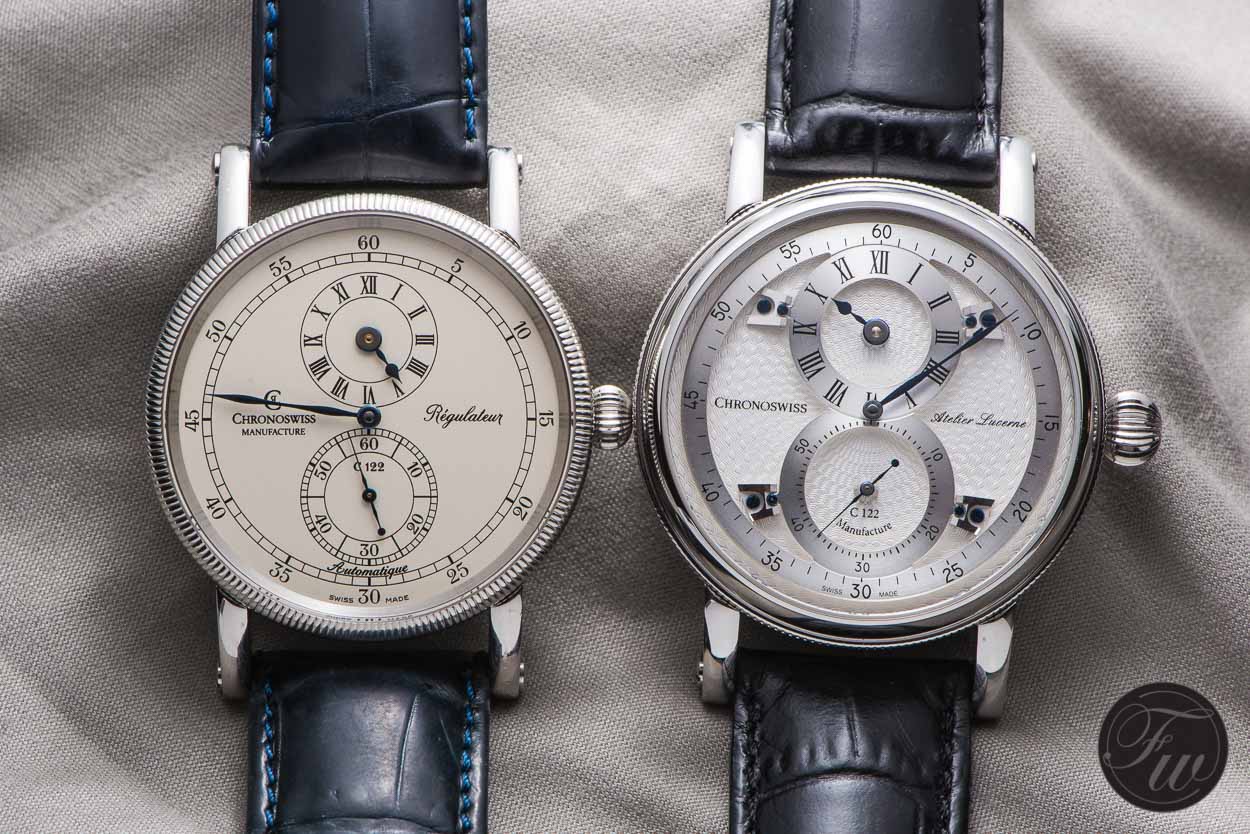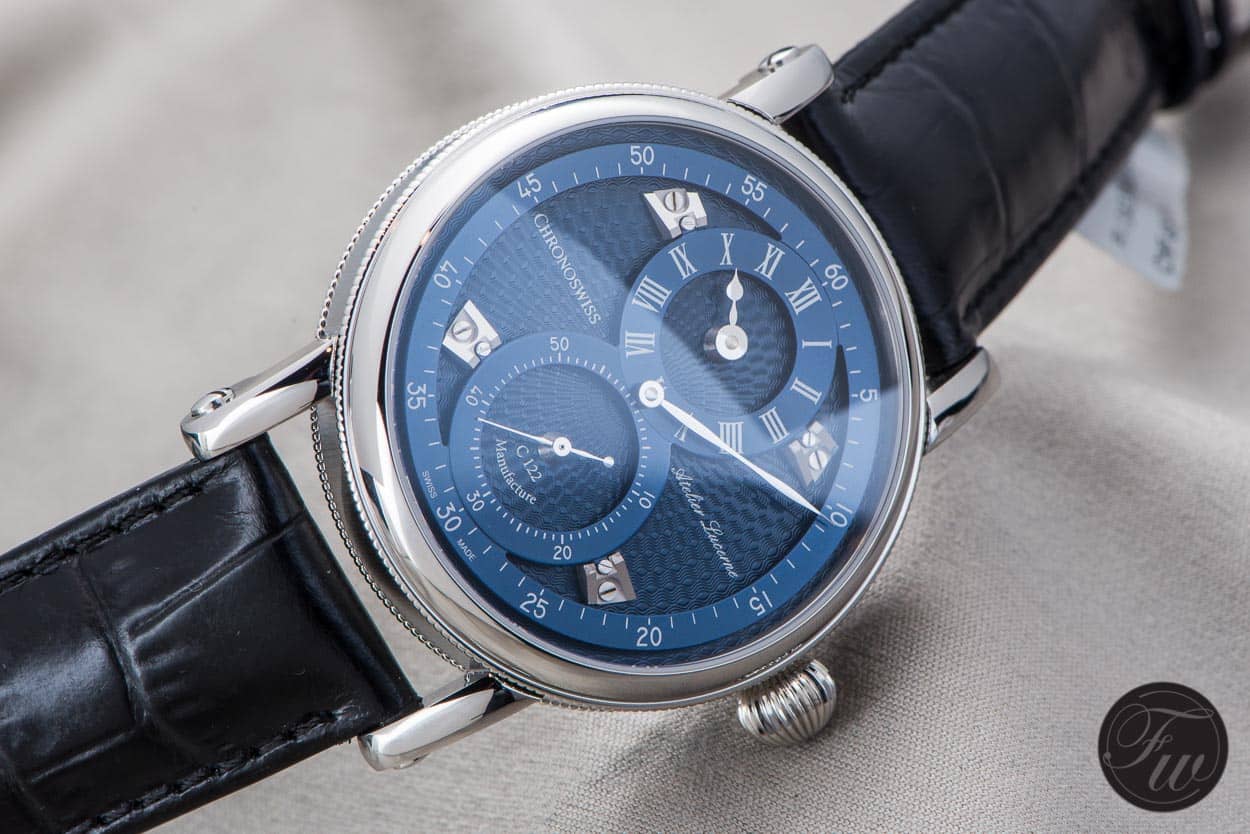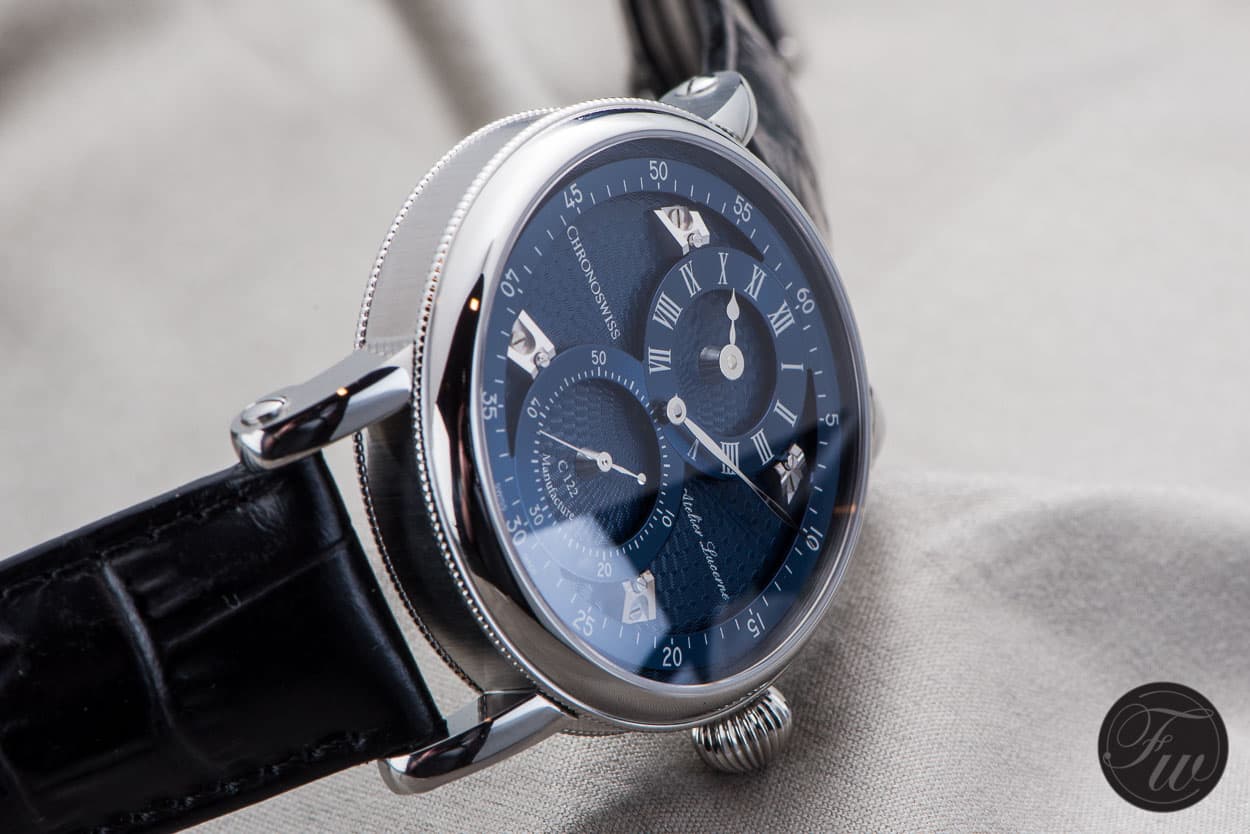Hands-On With The Chronoswiss Sirius Flying Regulator
I already shared my thoughts on this year’s BaselWorld show a few weeks ago (in this article) where I briefly mentioned Chronoswiss. Like many other brands, Chronoswiss grabbed back to one of their original models: the Régulateur. However, Chronoswiss restructured their collection of watches and uses two pillars: Sirius and Timemaster. These names were used for specific watches in the past, but the collection became so big that they used these names as ‘families’. You could say that the sporty Chronoswiss watches belong to the Timemaster collection and the classic watches to the Sirius collection.
I’ve never been a big fan of the Timemaster and that didn’t change with the addition of some newer / updated looking sports models. I associate Chronoswiss with classic watches, like the Régulateur, Opus, Delphis, Chronoscope etc and that’s what I also prefer to be honest.
So to my big surprise, Chronoswiss showed us some awesome Régulateur models, or to speak in correct terms: Siruis Flying Regulator, Sirius Flying Regulator Jumping, Sirius Régulateur Jumping Hour, Sirius Artist Régulateur Jumping Hour, Sirius Regulateur Classic and Sirius Régulateur Manufacture. The last two mentioned models aren’t new, but Chronoswiss had them on the table anyway so we could have a look at those too.
Today, I am talking about the Chronoswiss Sirius Flying Regulator. The watch that I like(d) best from the (new) Chronoswiss collection, so without further ado:
Chronoswiss Sirius Flying Regulator
If you are a bit longer into watches, you might recognize the dial with the typical Régulateur lay-out, Chronoswiss case and onion crown. If you are really into watches and know a bit about Chronoswiss, you might even recognize the C122 on the dial. This caliber C122 goes back to the first automatic versions of the Chronoswiss Régulateur. The first Chronoswiss Régulateur watches (introduced in 1987) were equipped with a hand-wound movement, based on the Unitas 6376 movement.
A few years later (early 1990’s), Chronoswiss started using the C122 automatic movement. This movement was based on the Enicar 165 caliber. Founder and watchmaker Gerd R. Lang saved a couple of those discontinued Enicar movements and used them for the Chronoswiss Régulateur. It seems that they had enough in stock to re-finished them to today’s taste and standards and use them in the new Chronoswiss Sirius Flying Regulator as well.
As a side note, I was surprised to see that the most basic version of the Régulateur, the Chronoswiss Sirius Régulateur Classic (retails for 3780CHF) does not have this C122 movement. The Chronoswiss Sirius Flying Regulator luckily does, but I wonder why this Régulateur Classic is considered to be ‘classic’ when it does not have that Enicar (or hand-wound Unitas movement for that matter).
Another major change between the first Chronoswiss Régulateur models and this new Sirius Flying Regulator is that the bezel is smooth instead of coined. I actually like the smooth bezel a lot, it is a bit easier on the eyes. Especially with a layered dial and engraved pattern on the lower dial, a coined bezel would be too much.
The dial of the Chronoswiss Sirius Flying Regulator is amazing. As you can see on this official Chronoswiss product page, this new model comes in six different versions. The stainless steel model comes in this blue dial and a silver dial. The gold version comes with a silver dial and a black dial and the black version (DLC) comes in a sporty version with red accents on the black dial (and calf leather strap) and a black dial with blue and yellow accents on an alligator strap. The blue version I am talking about today is the one I would prefer myself. The dial is galvanized brass with a guilloché lower dial and an upper dial with minutes, hours and seconds scale printed. There is a small grain effect in the upper dial(s).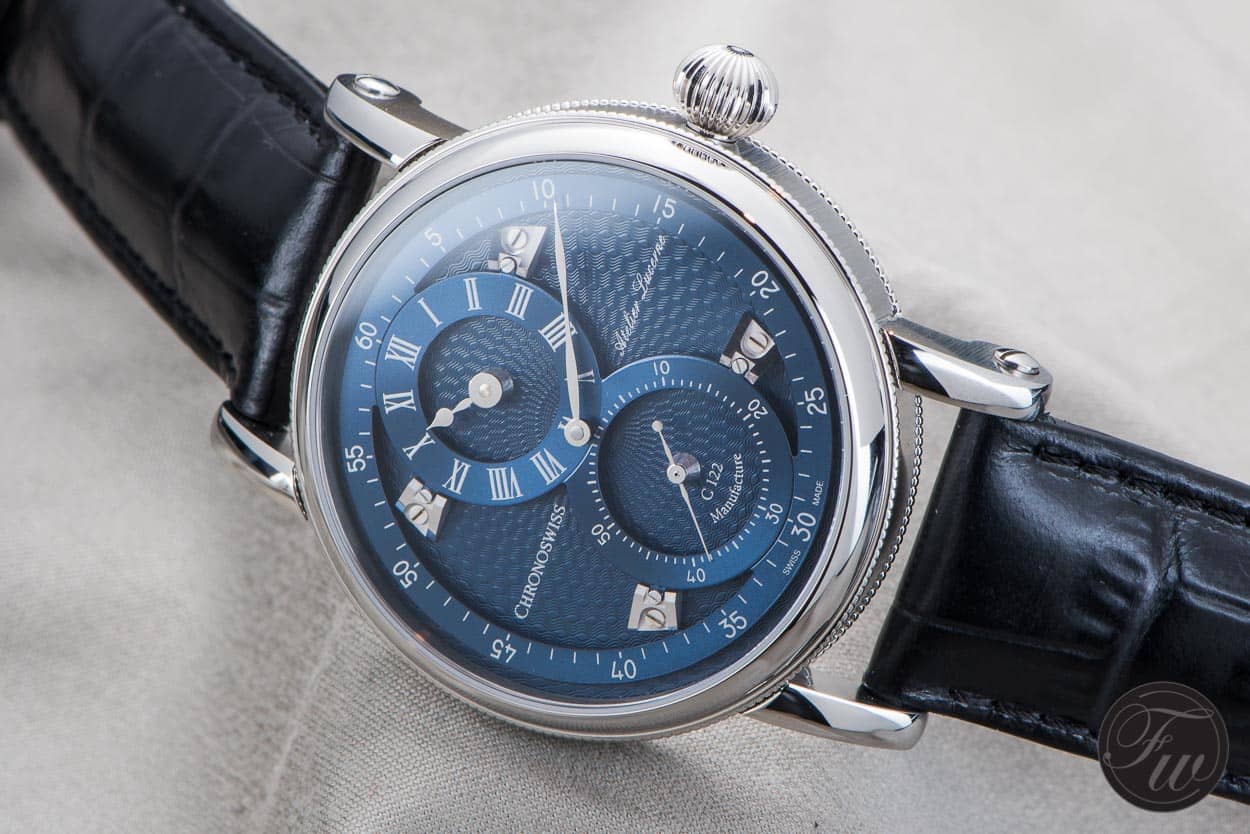
The upper dials for the hours and seconds having this floating or – flying – effect using bridges to lift the three circles from the lower dial. It takes a few moments to get used to read the time this way, but soon you will find out that it is actually pretty useful, as there are no blocking hands. As you can see on the comparison picture (2nd above) you will notice that Chronoswiss stayed true to the design of the hands on the first versions. These hands are nicely curved and the large minute hand was bent by hand.
I got my own Chronoswiss Régulateur in 1999 and it is a 1993 model if I am not mistaken. It is actually the same model as we featured in this article a few images above. I rarely wear it as the case diameter is 38mm but the fact that my wife more or less confiscated it also plays a role. This new Chronoswiss Sirius Flying Regulator has a case diameter of 40mm and is 11.8mm thick.
The 40mm size is perfect for me, for a dress watch. Although 38mm is okay-ish, 40mm is on the safer side. The onion crown is also a bit bigger than it used to be and is therefore easier to grasp and use. However, I always recommend to take your watch off your wrist before operating the crown. By using force from the angle with the watch on your wrist, you might damage the winding stem. 40mm also allows the fairly ‘busy’ dial to have a bit more space and prevent it from being perceived as cluttered.
Attached to the watch is this beautiful blue alligator strap. The watch is available with pin buckle but also with folding clasp. Now I do prefer pin buckles in most cases, but I have the Chronoswiss folding clasp as well and it is quite good. It is relatively flat, so no bulky steel part on the inside of your wrist.
With a list price of CHF6810 Swiss Francs (€6860 Euro) for the stainless steel models this watch is certainly more expensive than the basic version (Sirius Régulateur Classic) for CHF 3780 Swiss Francs or the Régulateur Manufacture for CHF5800 Swiss Francs but compared to the last one, the dial does make a huge difference. The Sirius Régulateur Classic is an interesting watch for CHF3780, but it doesn’t come with the C122 movement (Enicar). The folding clasp has an additional price of CHF300 Swiss Francs. Whether you find it worthwhile to choose that option is up to you of course. I don’t regret buying mine.
More information via Chronowsiss on-line. Watches can be bought directly via their e-boutique but limited to Austria, Germany, Switzerland, France and the United Kingdom.

